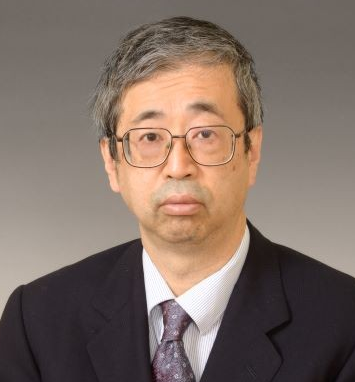Degree
-
Ph.D in economics Thesis ( 2020.2 Keio University )
Updated on 2025/02/03

Ph.D in economics Thesis ( 2020.2 Keio University )
Demographic Change, Low Fertility/Aging in Japan and Asia, Development of Human Capital, Service Trade, Feedback Exchange
Humanities & Social Sciences / Economic policy / Demographic Change, Low Fertility/Aging in Japan and Asia, Development of Human Capital, Service Trade, Feedback Exchange
Waseda University School of Law Graduated
1980.4 - 1984.3
Korean Language Institute of Yonsei University, Seoul, Korea Completed
1986.3 - 1987.2
Aoyama Gakuin University Graduate School of International Politics, Economics and Communication Master's Course Completed
2007.4 - 2009.3
Keio University Graduate School of Economics Doctor's Course Accomplished credits for doctoral program
2009.4 - 2015.3
Nikkei Inc. Editorial Bureau Staff Writer, Editor, Senior Researcher
1984.4 - 2023.3
Japan Center for Economic Research (JCER) International and Asian Studies Group Senior Researcher
2005.3 - 2015.3
Atomi University Faculty of Management Part-time lecturer
2013.4 - 2015.8
Tokai University School of Political Science and Economics Part-time lecturer
2021.9 - 2024.3
Fukui University of Technology Fukui University of Technology Professor
2023.4
The Japan Academic Society for Ventures and Entrepreneurs
1997.11
Japanese Association for Chinese Economy and Management Studies
2009.4
Japan Society for Multicultural Relations
2010.2
Population Association of Japan
2010.4
Japan Comparative Education Society
2011.6
Japanese Society for Information and Systems in Education
2022.2
Japan Society for Educational Technology
2023.12
Anticipating Labor Shortage in an Aged Society: Lessons from Japan
Kabe, Shigesaburo
Presentation for the international Conference “Population Aging;Its Impacts on Economic Development, held by VASS 2022.9
Low Fertility and Child-support in Taiwan (Abstract only) Reviewed
Kabe, Shigesaburo
The Journal of Population Studies 49 47 - 62 2013.6
Contribution of the Host Institute to the Visiting Fellow Program for Young Asian Researchers Reviewed
Kabe, Shigesaburo
Paper presented at the International Conference of the Academy of Human Resource Development (Asia Chapter) in Kuala Lumpur 2011.12
Tsutomu Miyagawa , Keun Lee , Shigesaburo Kabe , Junhyup Lee , Hyoungjin Kim , Kazuma Edamura , YoungGak Kim
RIETI Discussion Paper Series ( 10-E-013 ) 1 - 40 2010.2
Long-term Forecast of the Demographic Transition in Japan and Asia Reviewed
Komine, Takao and Shigesaburo Kabe
Asian Economic Policy Review 4 ( 1 ) 19 - 38 2009.6
Innovative Communication Practice: A Case of Activating Communication in A Postgraduate Class Reviewed
Kabe S, A. Yoshioka, T. Tagata, H. Nagata, A. Kaji, M. Kakuta, Y. Goda
In Proceedings of World Conference on Educational Multimedia, Hypermedia and Telecommunication (AACE) 2009.6
An International Comparison of the TFP Levels of Japanese, Korean and Chinese Listed Firms Reviewed
Fukao, Kyoji, Tomohiko Inui, Shigesaburo Kabe, Deqiang Liu
Seoul Journal of Economics 21 ( 1 ) 5 - 33 2008.4
Fukao, Kyoji, Keiko Ito, Shigesaburo Kabe, Deqiang Liu, Fumihide Takeuchi
Hi-Stat Discussion paper series (191) 1-37, 2006 2006
High-Income Asia: Lessons in Population and Economy (forthcoming)
Kabe, Shigesaburo( Role: Sole author)
Springer 2025.5
Moving Up the Ladder: Development Challenges for Low and Middle-Income Asia
Kabe, Shigesaburo, Ryuichi Ushiyama, Takuji Kinkyo, Shigeyuki Hamori (eds.)((Role: Co-editor and contributor: Ch5 Human Resouce Development in Asia: Expected Role of Higher Education))
World Scientific 2016.4 ( ISBN:978-9814723565 )
Examining Heisei Jpan: Economy
Komine, Takao (eds.)( Role: Contributor , (Role: Contributor, (Komine, Takao, Shigesaburo Kabe)Part Ⅶ-(5.2) Long-Term Forecasts for the Demographic Transition in Japan and Asia))
Japan Publishing Industry Foundation for Culture 2023.3 ( ISBN:978-4-86658-227-6 )
Global Linkages and Economic Rebalancing in East Asia
Kinkyo, Takuji, Yoichi Matsubayashi, Shigeyuki Hamori (eds.)( Role: Contributor , Ch.7 Can South-South trade be a driving force for future economic growth?)
World Scientific 2013.2 ( ISBN:978-981-4412-84-1 )
Borders blurring in travel-happy APEC
Kabe, Shigesaburo
Nikkei Asian Review 2014.1
Workforce set to become a problem of the ages
Kabe, Shigesaburo
Nikkei Asian Review 2013.12
Relations with Northeast Asia (South Korea and Taiwan) -- South Korean Corporations Take the Lead, Taiwanese Corporations also Start Active Deployment
Kabe, Shigesaburo
Asia Research Report 2011: India and the World 67 - 77 2011.12
Management Practices and Firm Performance in Japanese and Korean Firms-An Empirical Study Using Interview Survey International coauthorship
1 - 37 2009.3
Cultural and Human Exchanges in East Asia Are Expanding
Kabe, Shigesaburo
JCER staff report 1 - 3 2007
Australia Moves Ahead in the Export of Education
Kabe, Shigesaburo
JCER staff report 1 - 3 2007
Hong Kong's Competitiveness Still Shines 10 Years After Its Reversion to China
Kabe, Shigesaburo
JCER staff report ( 81 ) 1 - 3 2006
Takeuchi, Fumihide, Shigesaburo Kabe
JCER staff report ( 78 ) 1 - 5 2006
Low Fertility and Childcare Support Measures in East Asia: Consideration from The Perspective of Choice
2024.6
Contribution of the Host Institute to the Visiting Fellow Program for Young Asian Researchers International conference
10th International Conference of the Academy of Human Resource Development (Asia Chapter) 2011.12 Academy of Human Resource Development (AHRD)
Innovative Communication Practice: A Case of Activating Communication in A Postgraduate Class International conference
Kabe, Shigesaburo, Arifumi Yoshioka, Tomiko Tagata, Hiroko Nagata, Asuka Kaji, Masaaki Kakuta, Yoshiko Goda
World Conference on Educational Multimedia, Hypermedia and Telecommunications 2009 2009.6 Association for the Advancement of Computing in Education (AACE)
FInance Ⅱ
Economics Ⅰ
Economic Policy
Introduction to International Economics
Introduction to Asian Economies